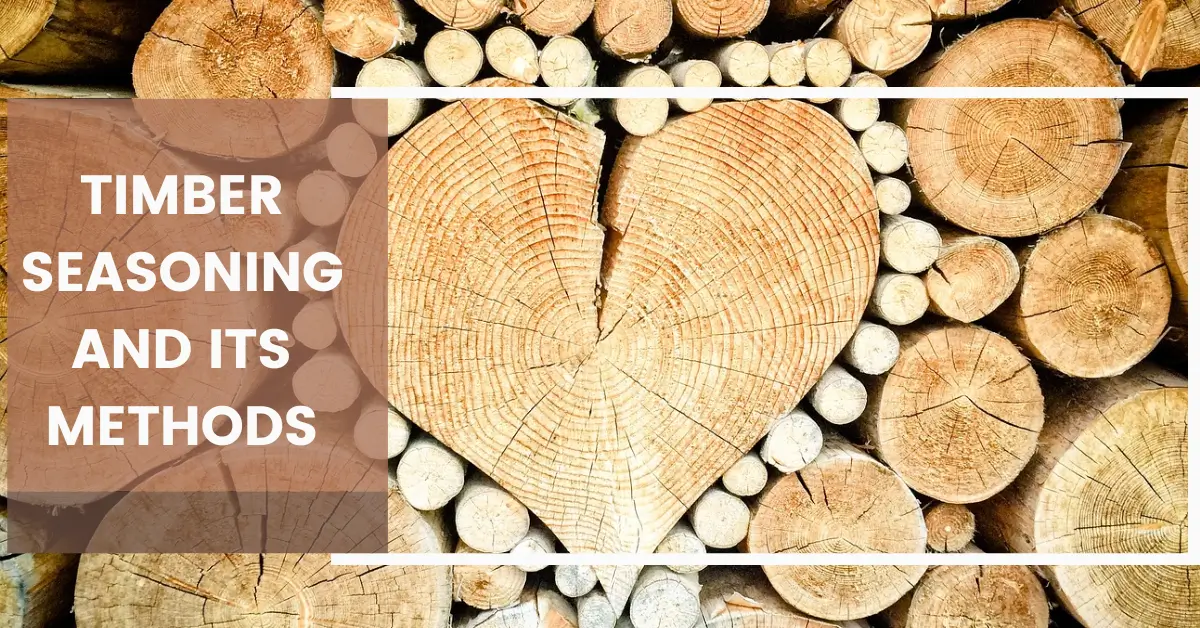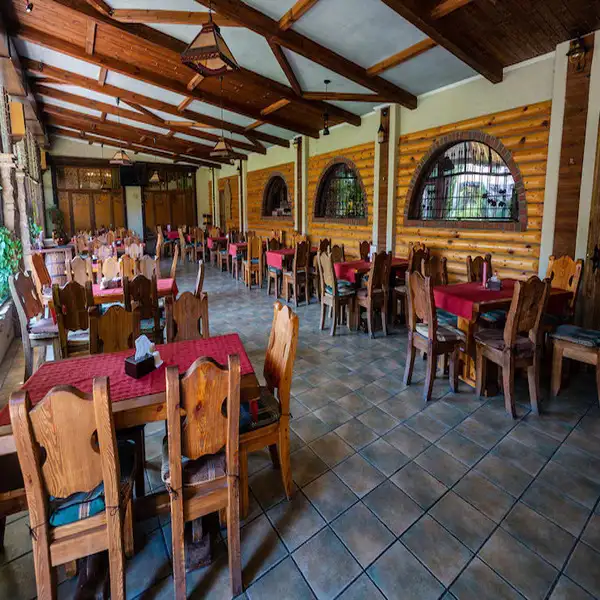Timber Seasoning and its Methods

Timber Seasoning and its Methods
Timber, the stuff we build things with, is super important in construction. But, there’s a key thing we need to do to make it strong and last longer – it’s called seasoning.
Timber seasoning is like giving wood a spa day. We dry it and condition it so that it becomes tougher and more reliable. Here in this blog, we will discuss the significance of timber seasoning and various methods of doing so. So, let’s get started.
What is Timber Seasoning?
Timber seasoning is basically the process of getting wood ready for action. Imagine it as Wood’s training camp before it joins the construction team. The main goal is to make the wood strong and durable by drying and conditioning it in a controlled way.
Purpose of Seasoning
So, why do we put wood through this training? The answer is simple – strength and stability. Seasoning extracts the excess water from the wood, making it less possible to distort, crack, or get thrashed by sneaking bugs. It’s like offering the wood superhero abilities to resist the challenges it might encounter in the harsh world of construction. In brief, timber seasoning is the hidden sauce that spins ordinary wood into a reliable, powerhouse building material.
READ MORE:- maharaja bed design
Methods of Timber Seasoning
1. Natural Seasoning
Air Seasoning
Natural seasoning involves allowing wood to air-dry outdoors or in well-ventilated spaces. Air seasoning is a subset of this method, relying solely on the natural elements – wind and sun – to gradually reduce the moisture content in the wood. The process can take a considerable amount of time, often up to a year, making it a patient but cost-effective approach, especially suitable for large quantities of timber.
Water Seasoning
Contrary to its name, water seasoning involves immersing timber partially in water. This controlled soaking helps reduce drying stresses, preventing cracks during the subsequent drying phase. After soaking, the wood is allowed to air dry. This method is often employed for specific wood types where maintaining natural colors is crucial.
Natural timber seasoning is cost-effective, environmentally friendly, and well-suited for large-scale timber batches. Allows wood to acclimate gradually to environmental conditions. However, it is time-consuming, as it relies on natural elements like wind and sunlight. Seasoning duration can be extended, especially in unpredictable weather.
2. Artificial Seasoning
Kiln Seasoning
Artificial seasoning aims to expedite the drying process using mechanical means. Kiln seasoning is a prime example, utilizing a controlled chamber (kiln) to manipulate temperature and humidity. This accelerates the drying process significantly, taking only weeks instead of months. Kiln seasoning is a common industrial practice, ensuring uniform drying and minimizing defects in the wood.
The kiln timber seasoning method accelerates the drying process, providing controlled conditions for moisture removal. Offers efficiency, allowing for a faster turnaround in timber production. However, it may involve higher operational costs due to energy consumption. Requires careful monitoring to prevent over-drying or surface checking.
READ MORE:- single door almirah design
Chemical Seasoning
Chemical seasoning is a method that implies subjecting wood to chemical solutions, seeking to accelerate the drying procedure. These solutions not only function to lower the moisture scope but also act as a protecting guard, supporting the wood against potential hazards like rot and pests. The importance of meticulous handling cannot be exaggerated in this process, as it is necessary to stop any negative impacts on the wood’s natural properties. Chemical seasoning becomes the method of choice when time efficiency and elevated protection are paramount considerations, making it a strategic choice in various industrial and construction settings.
Its advantages include quickening the drying process while adding a protective layer against decay and pests. Suitable for situations where time efficiency and enhanced preservation are critical. Careful selection of chemicals is essential to prevent negative effects on wood properties. Potential environmental concerns due to chemical usage.
Electrical Seasoning
In the realm of timber treatment, electrical seasoning stands out as a precise and controlled technique. By passing an electric current through the wood, moisture is evaporated, ensuring a meticulous drying process. Despite its energy-intensive nature, electrical seasoning proves its worth in specific applications where maintaining tight control over the seasoning process is essential. The method strikes a delicate balance between speed and precision, making it particularly valuable in certain industrial contexts where the quality and characteristics of the seasoned wood are of utmost importance.
What are the Effects of Seasoning on Timber?
Timber seasoning really changes how wood works. At first, the wood contains a ton of water in it, making it apt to situations like distortion and damage. But, after seasoning, we reduce the water, making the wood more stable and less likely to have issues. The wood also becomes lighter, which makes it easier to handle and move around.
READ MORE:- l shaped restaurant booth
Before seasoning, the color might not look great – it could be raw or greenish. But after seasoning, the colors become richer and more defined, making the wood look better. Density, which is how tightly packed the wood fibers are, increases after seasoning. This makes the wood stronger and more durable for building things.
When it comes to how the wood acts, seasoning does a lot. Before seasoning, the wood might break or bend easily. But after seasoning, it gets stronger, reducing the risk of breaking and making it better at holding heavy stuff. The hardness also improves, making it tougher against wear and dents. Seasoning even makes the wood more flexible but less prone to bending and warping, adding to its structural strength.
Workability, or how easy it is to shape and cut the wood, improves after seasoning. Before seasoning, it’s a bit tricky because of the moisture. But after seasoning, it becomes easier to work with. Lastly, seasoning boosts the wood’s durability. Before, it might be at risk of decay and bugs. After seasoning, it becomes more resistant, lasting longer in different uses. So, timber seasoning is like a superhero training for wood, making it better for building and crafting.
Final Take
Timber seasoning is the secret behind sturdy, reliable wood. From lowering moisture scope to improving stability and durability, this approach converts timber into a strong material. Whether it’s about constructing wood more workable or increasing its resistance to rot, seasoning plays a pivotal role. For top-notch timber furniture, Suren Space, the leading manufacturer, supplier, and wholesaler, understands the significance of well-seasoned wood. Our dedication to quality is mirrored in every piece, emphasizing the effect of appropriate seasoning on the longevity and dependability of timber furniture. Adopting the importance of seasoning ensures that each product from Suren Space stands the test of time, embodying strength, durability, and timeless beauty.
READ MORE:- What Is Sheesham Wood? Everything You Need To Know

Hotel Furniture

Restaurant Furniture

Hotel Bathroom Furniture

Industrial and Rustic Furniture

Reclaimed and Recycled Furniture

Leather and Upholstery Furniture

AUTOMOBILE | AUTOMOTIVE FURNITURE

Curved, Carved & Bent Furniture


